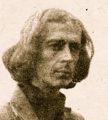
Bouillons Kub
A white cube of space, the former cider press of the manoir Les Bouillons in Orval Sur Sienne, Normandy, had been André’s studio. In 2013 the artist, president of the Arsor association of contemporary artists, developed the space as a gallery. Through exhibitions and meetings, Bouillons Kub establishes a growing network of cultural and artistic links.
Flyers

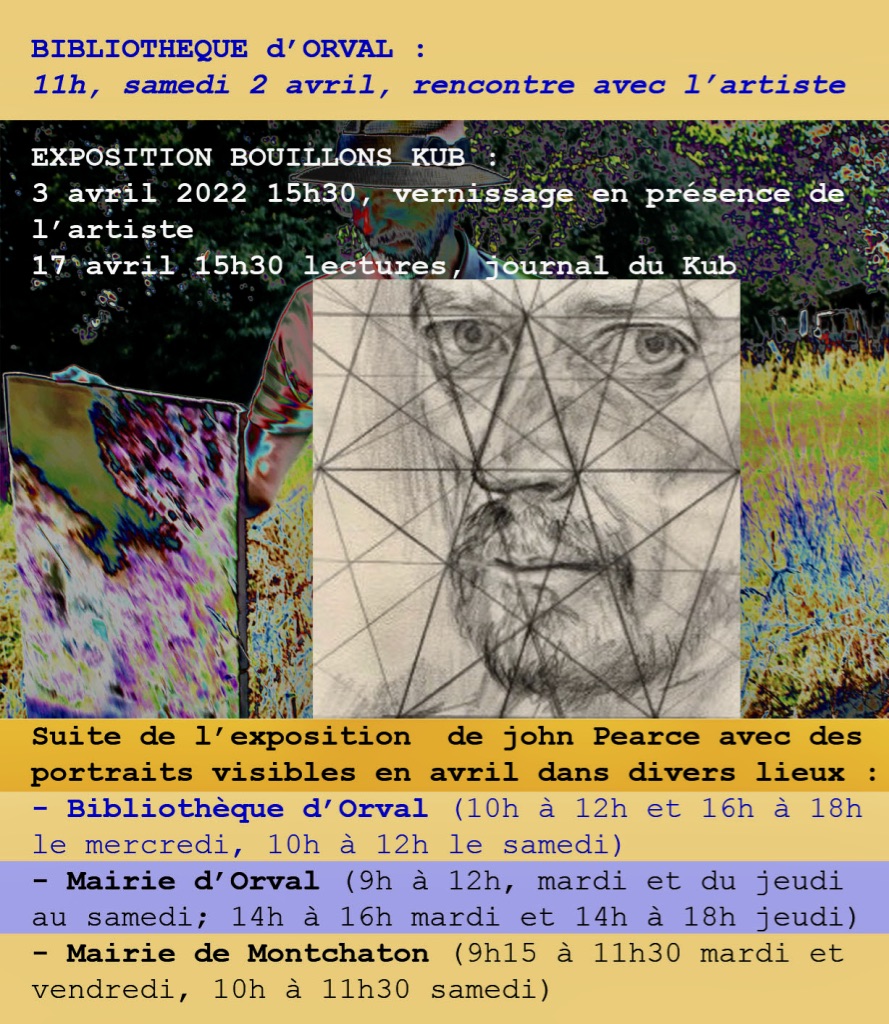
An Invitation
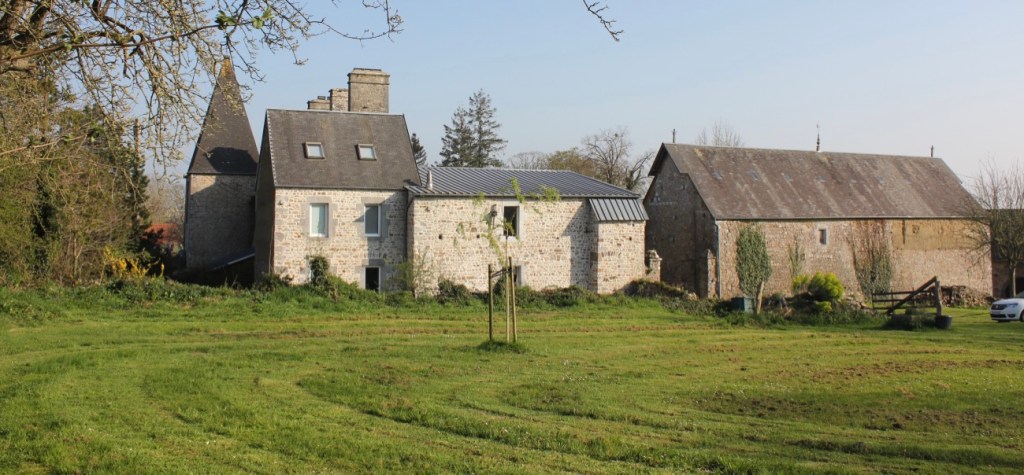
André (aka Marc Gemin) and I have known each other for many years. In February 2022, having got wind of a significant upcoming birthday, he asked if I would consider mounting an exhibition of my portraits and self-portraits at the Kub. I have always made drawings or paintings of people around me and still have many, some from as far back as the 1960s, but portraiture has not been my main profession as an artist, and I rarely accept formal commissions. However, in 2020 I had completed an outdoor self-portrait, which was exhibited in 2021 at the Mall Gallery, London, and this could form the basis of the exhibition.
Protocols

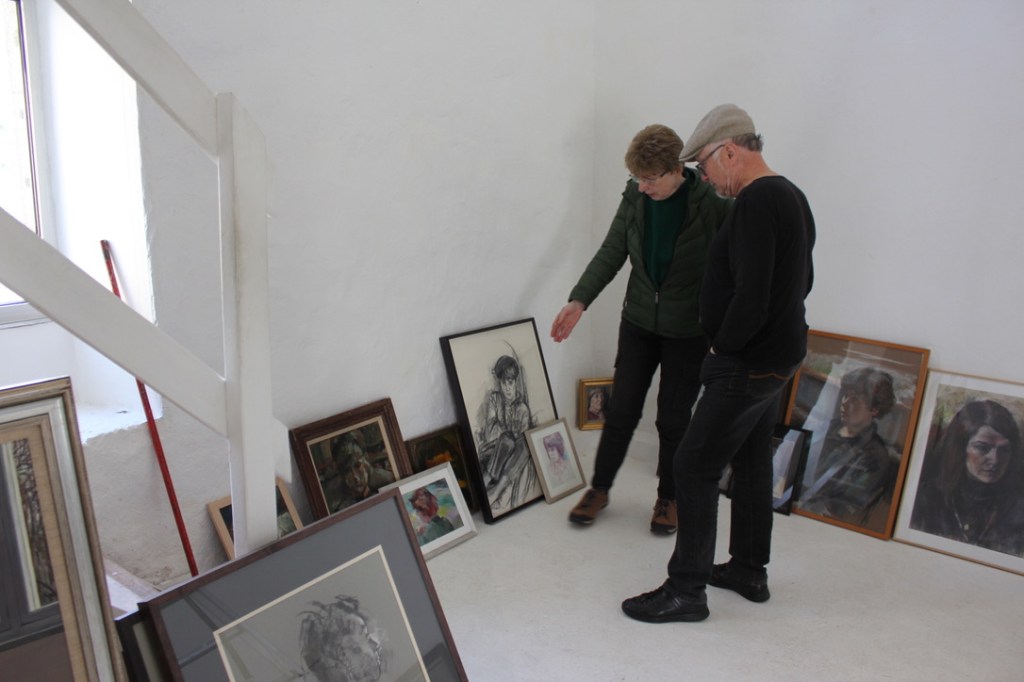

There are usually four art events annually at Bouillons Kub, and each follows a ‘protocol’: ONE EXHIBITION, ONE ARTIST, ONE WORK. Any expectations I or my co-pilot Susan Herivel might have entertained of a lifetime’s work gathered into one venue had to be abandoned. This did not stop Susan, whose French, unlike mine, is fluent, from engaging in much serious discussion with André.
Events
Besides the one artist, each event also involves writers, poets, audio performances, discussions, and the publication of a journal. André has successfully promoted the Bouillon Kub shows as communal cultural events, and exhibits are also placed at other public buildings in the Commune.
The day before the opening at Bouillons Kub, I was required to meet the public in the charming little public library at Orval. There was a table strewn with my sketchbooks, some prints and other material, about a dozen people and an expectant silence which it was my job to fill for the next hour. Considering my unreliable command of French, it went quite well as an interactive talk, covering a few technical and philosophical aspects. Photos were taken, but unfortunately no film,

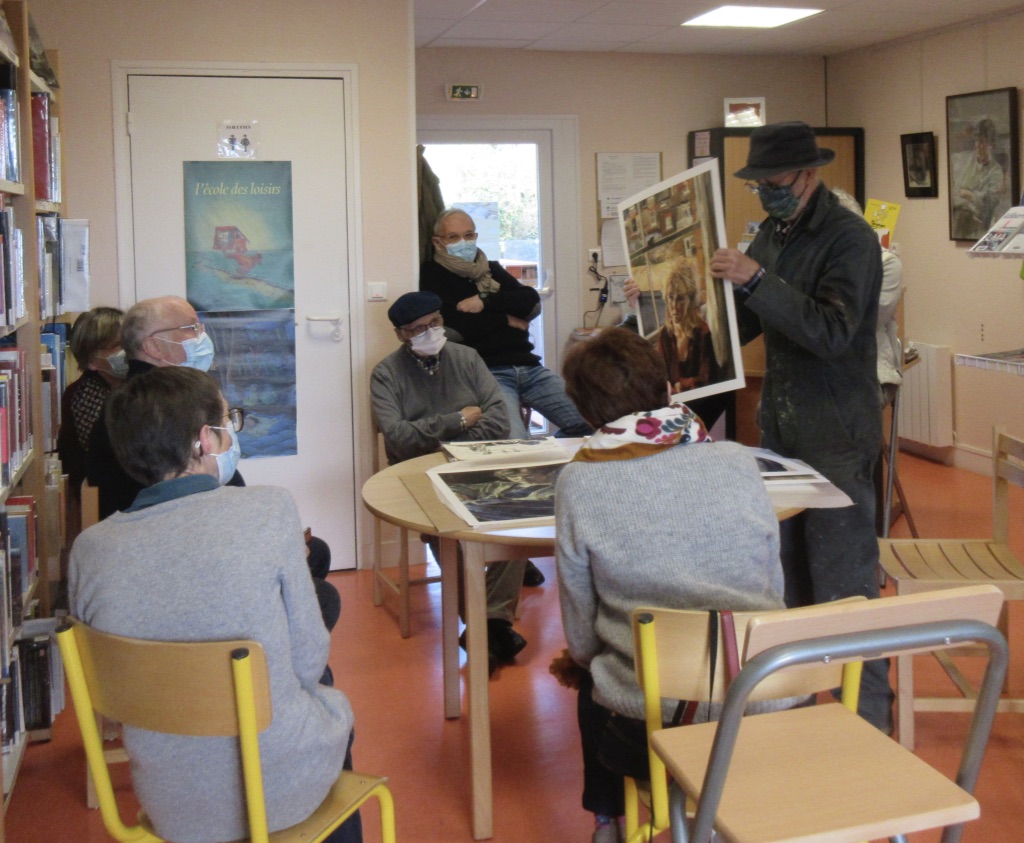
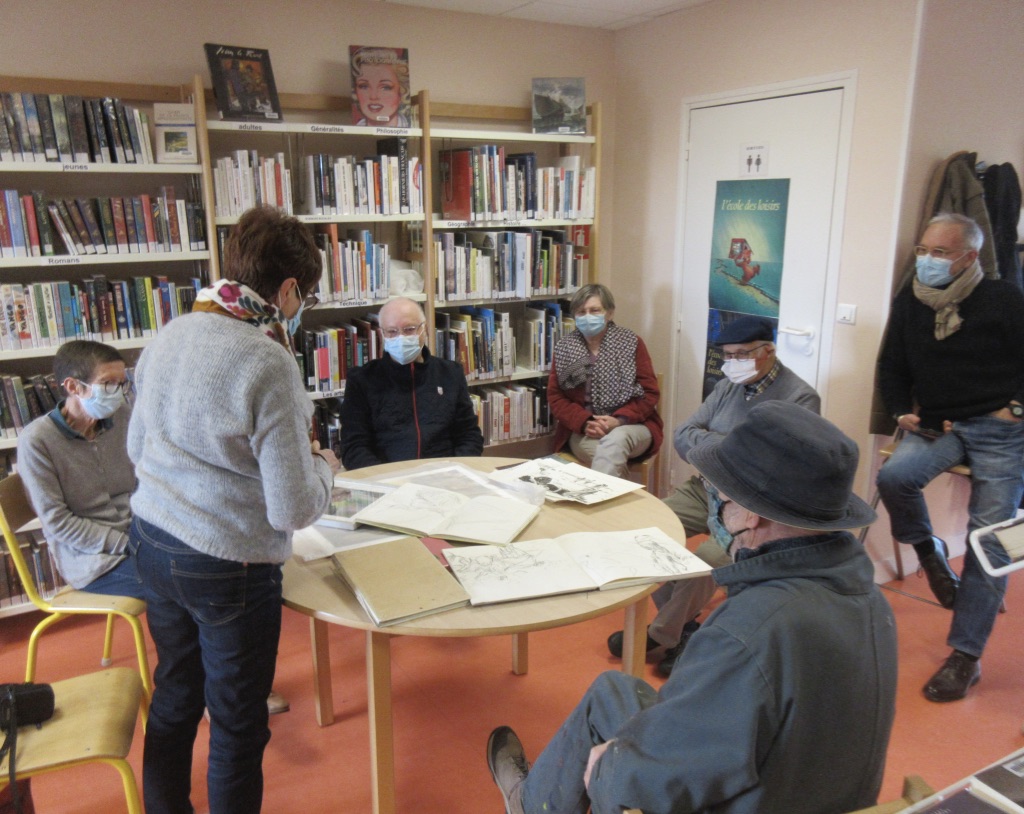
Vernisage, Bouillons Kub
I had supplied thirty-two framed drawings and oil paintings of various sizes, and a number of unframed drawings, prints, sketchbooks etc. In the event, the main exhibit in Bouillons Kub itself was austere and minimalist, consisting only of my 2020 self-portrait, suspended in front of one wall, and ‘looking towards’ seven more self-portraits, the earliest from 1962, on the opposite wall. There was also a video projection of me working on a ‘plantscape’ at Les Bouillons ten years earlier.

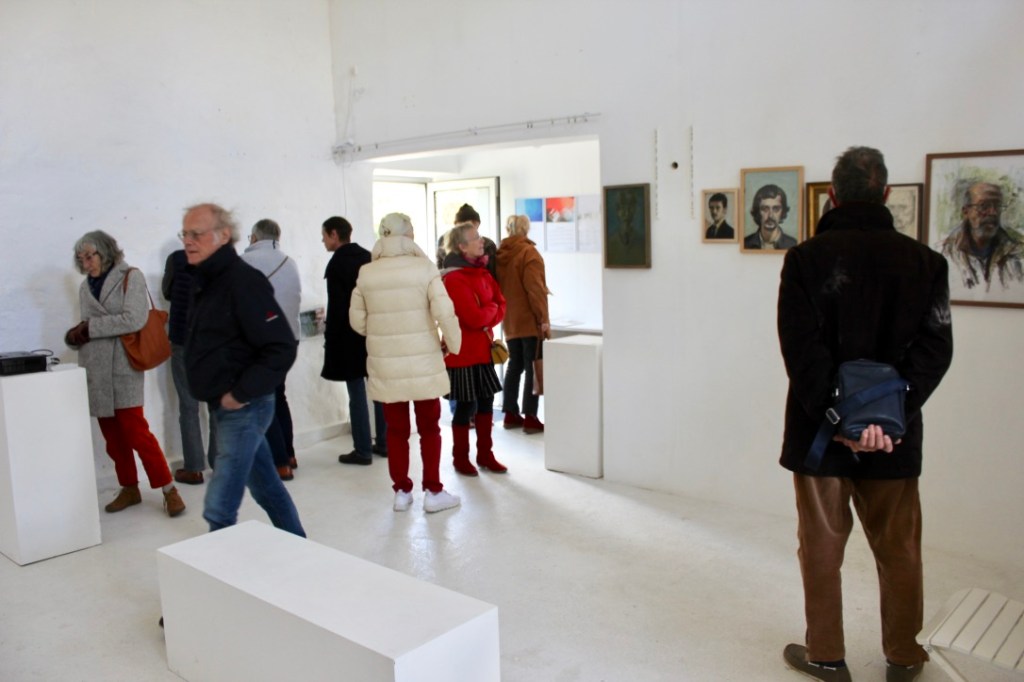

The Mairie, Orval
The exhibition continued on one wall at the Mairie at Orval Sur Sienne, where my 4’x3′ oil of Barry Long The Spiritual Teacher replaced a photo of President Emmanuel Macron. Two days earlier there had been a wedding in the Mairie, and the happy couple had demanded that the pictures be taken down.
They were later rehung, but without the accompanying text explaining who Barry Long was. The curator wanted me to ad-lib an explanation, and fortunately, a bilingual friend was on hand to help out – I wasn’t too sure of the French for ‘inner stillness’.

I felt the pictures on display in the Mairie did make a palpable impact, after the self-portraits. The written text was subsequently reinstated next to the picture of Barry.

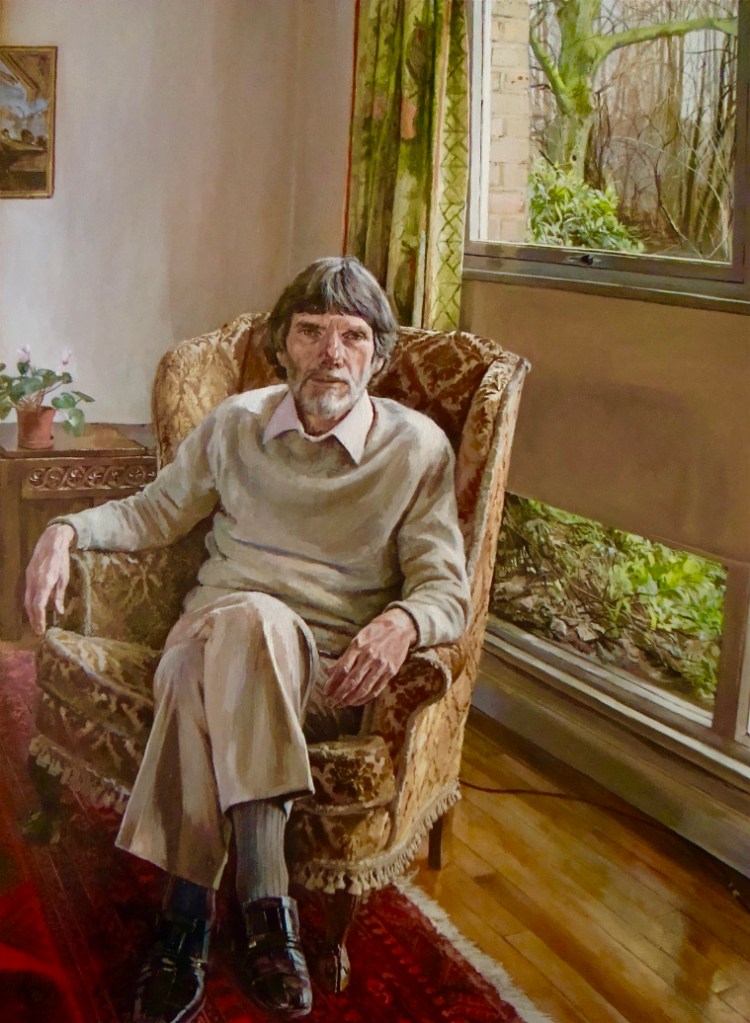
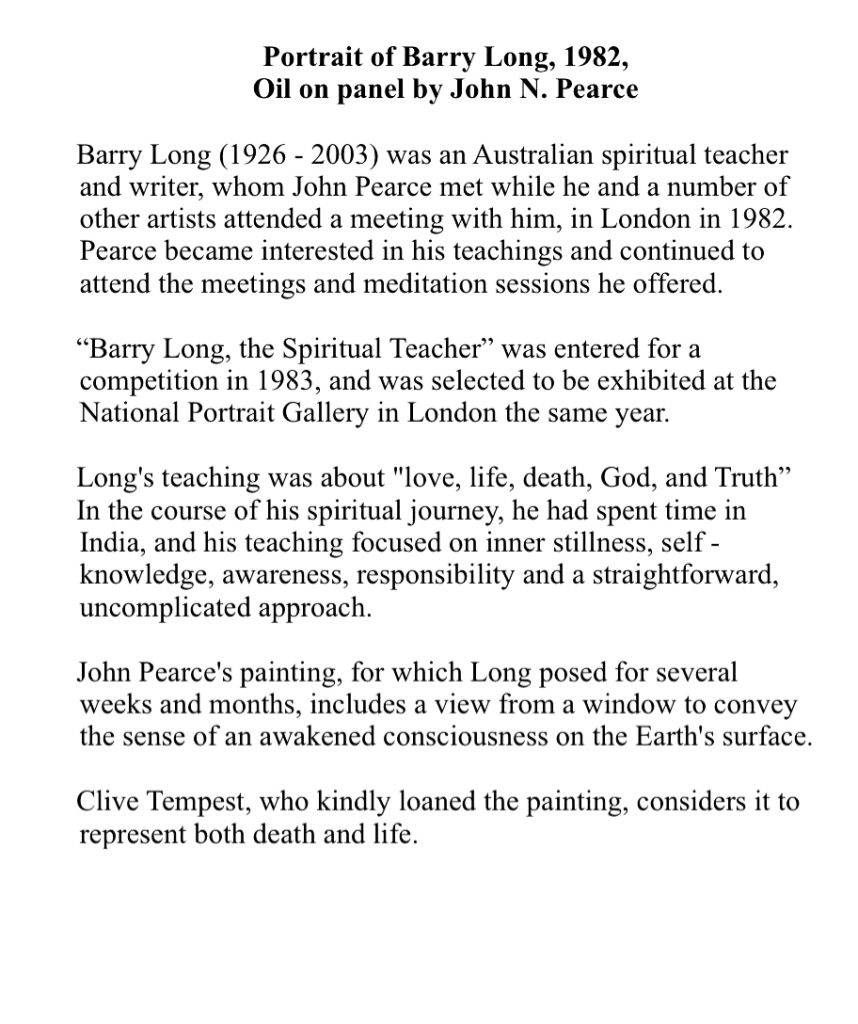

The Orval Public Library and The Mairie at Montchaton
Fourteen mostly early portraits of loved ones (‘proches’) were displayed in the Bibliotheque, and four more large charcoal and pastel works in another municipal venue at nearby Montchaton. Perhaps in such surroundings, the impact of art could be more immediate and inclusive than in a dedicated art gallery.
(Click on images to view gallery)


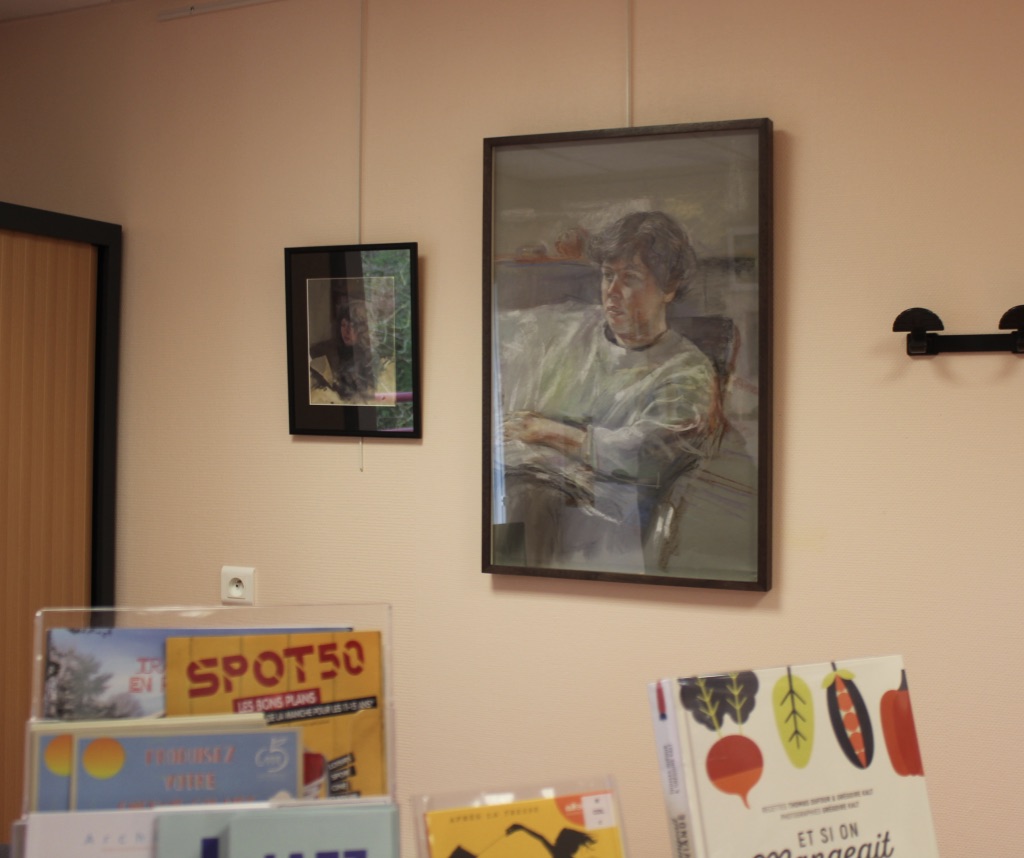
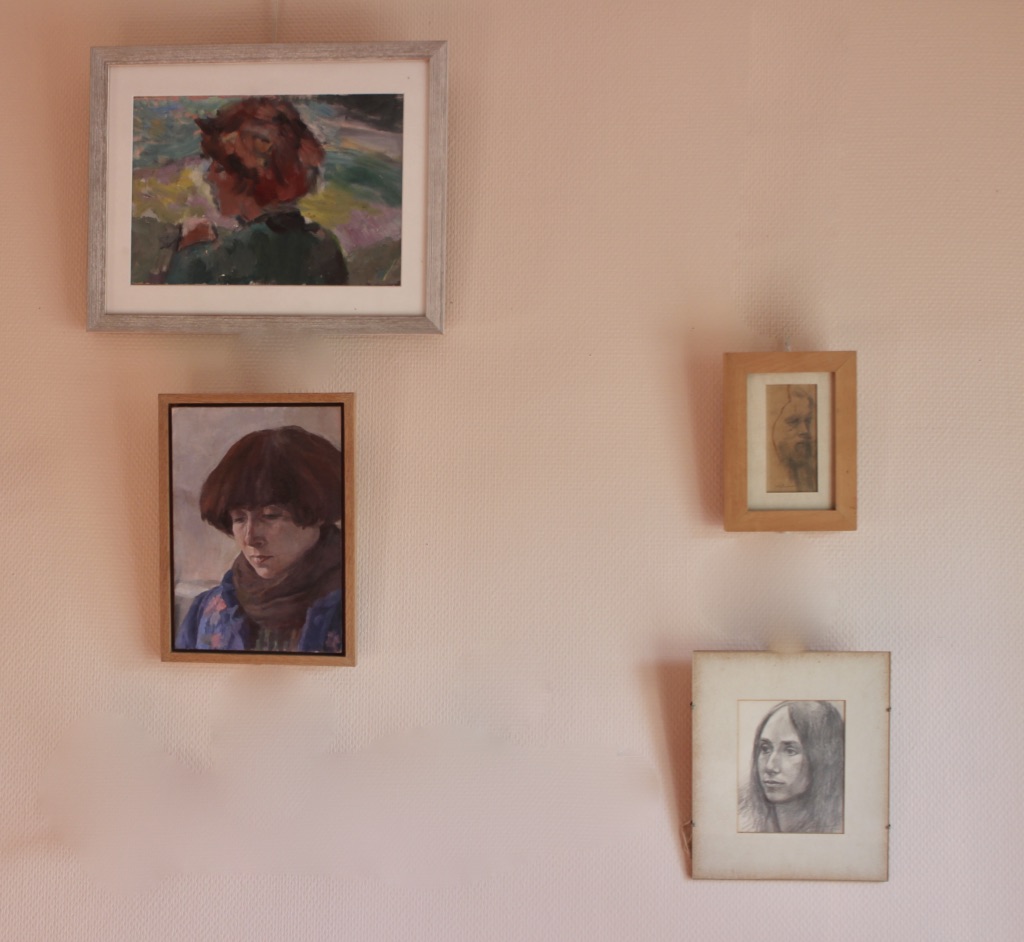

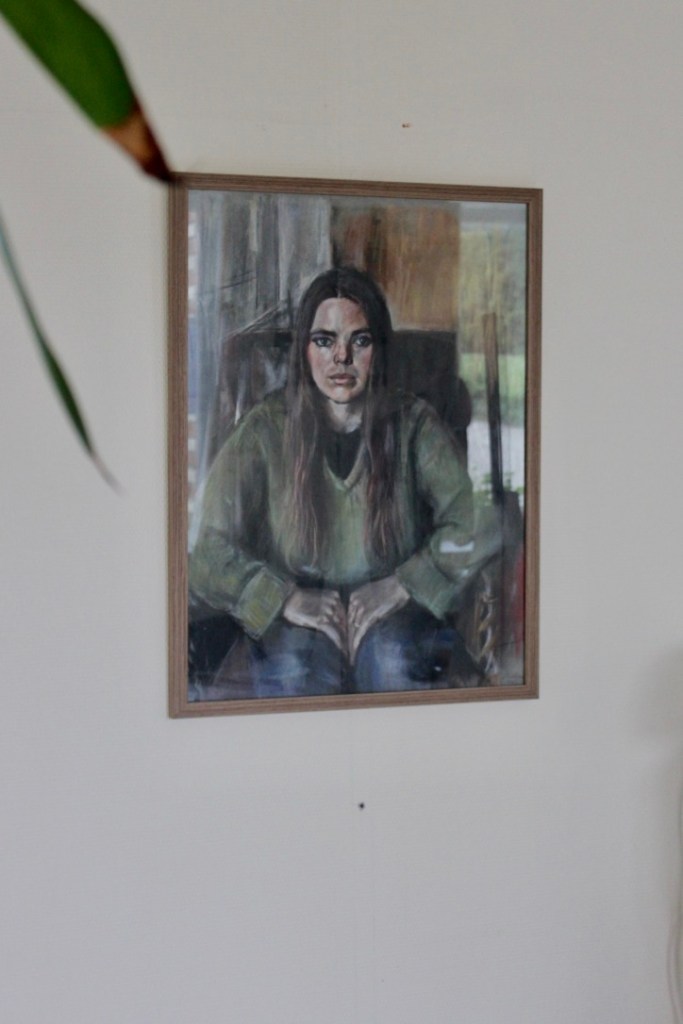


Salon des refusés.
As a number of works had not been included, I adapted my studio in La Trancardière as a further exhibition venue – and sure enough we received quite a few interested and interesting visitors.
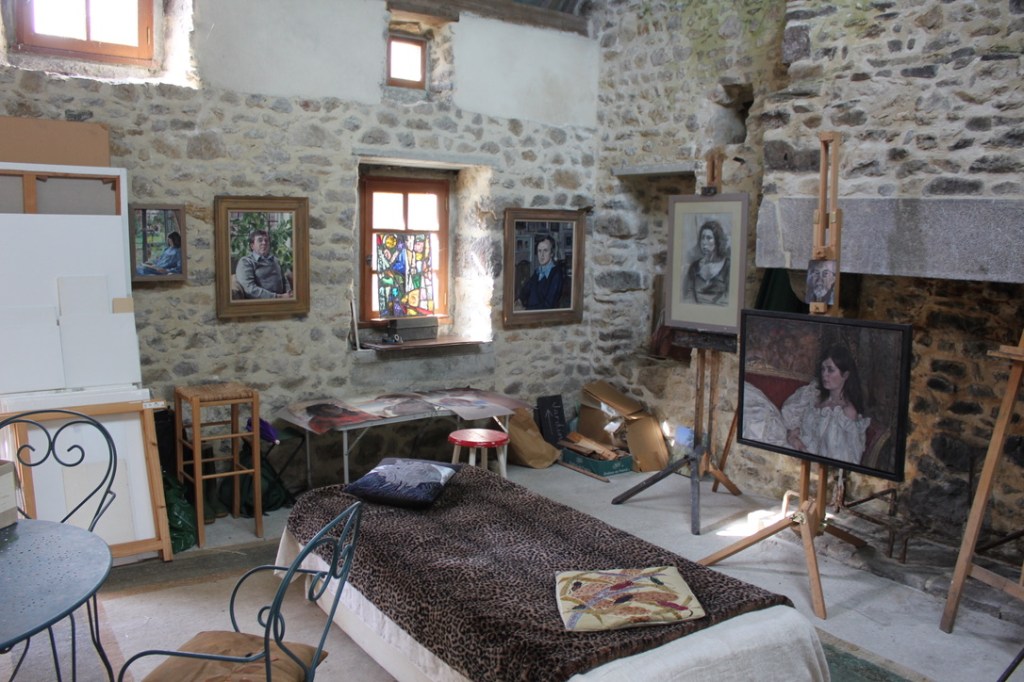
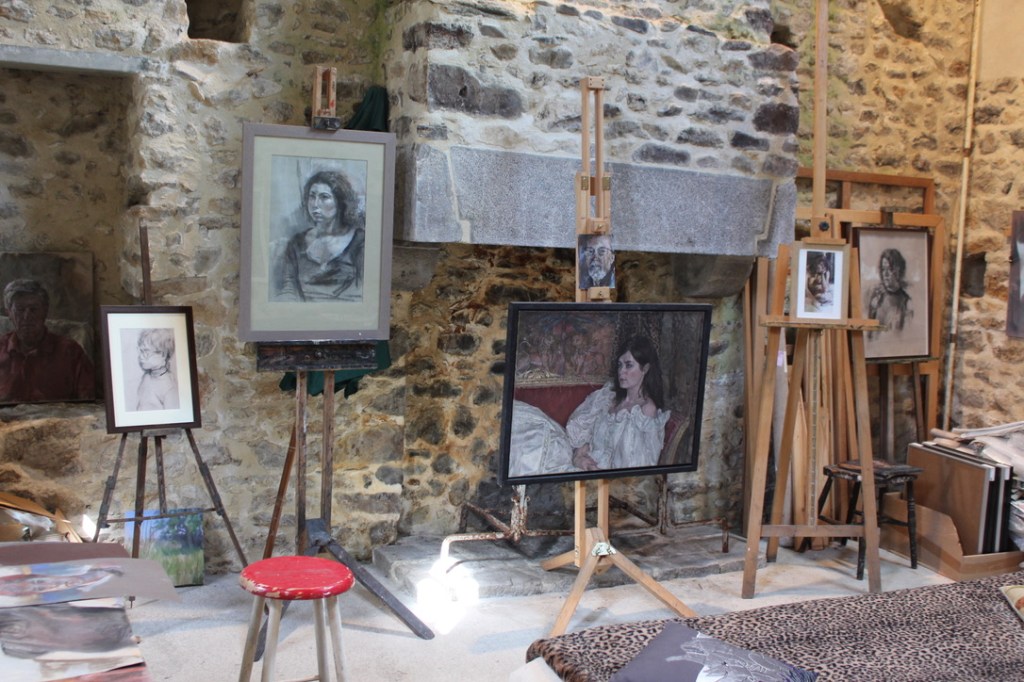
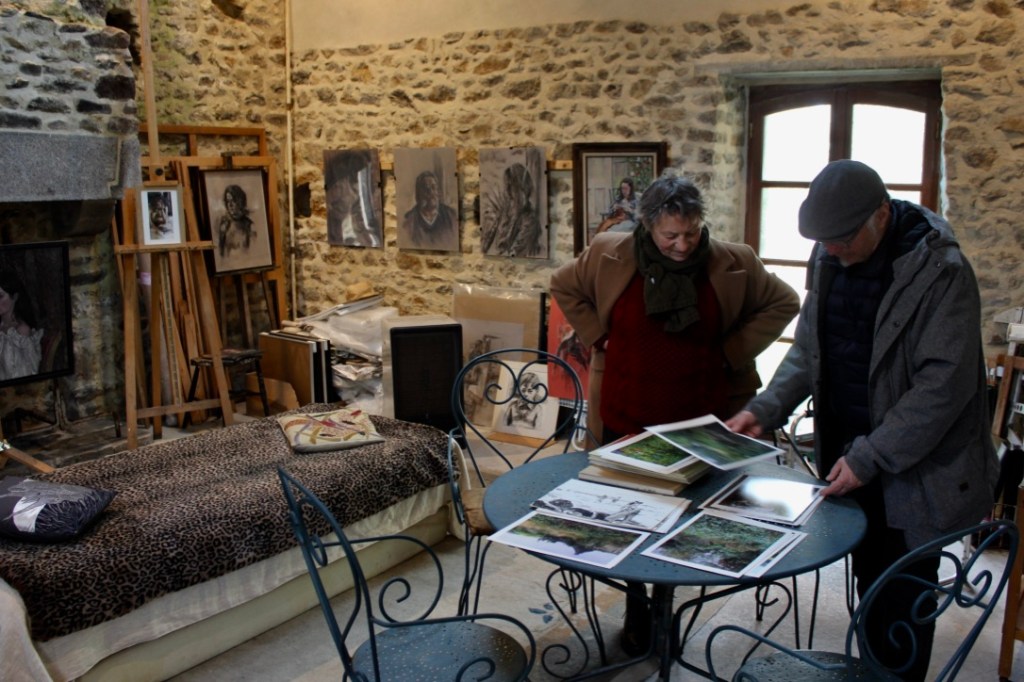

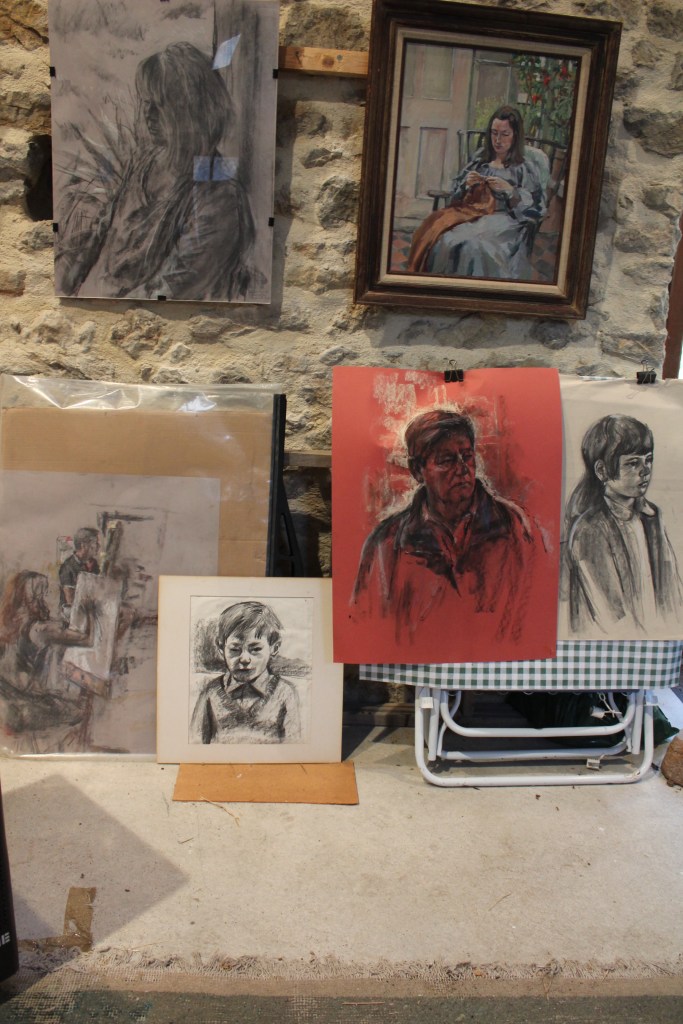
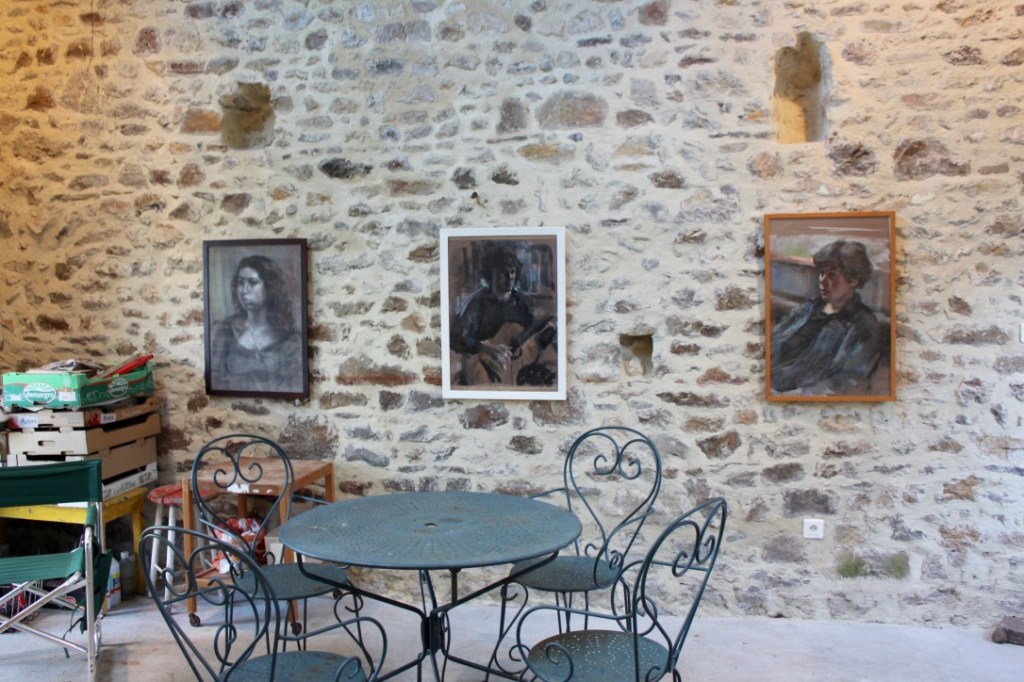
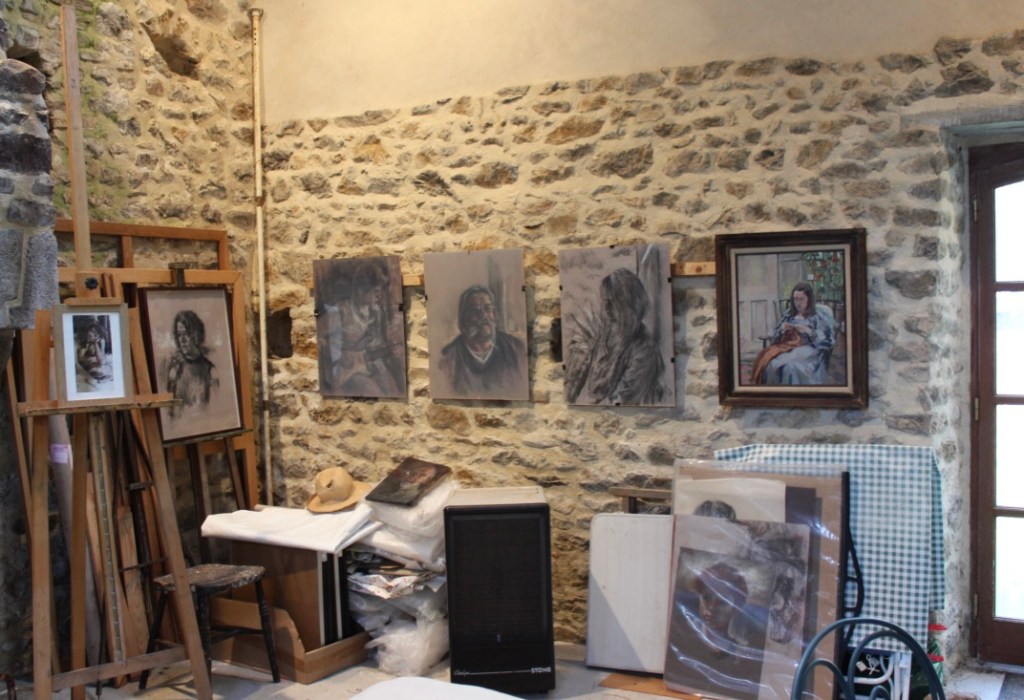

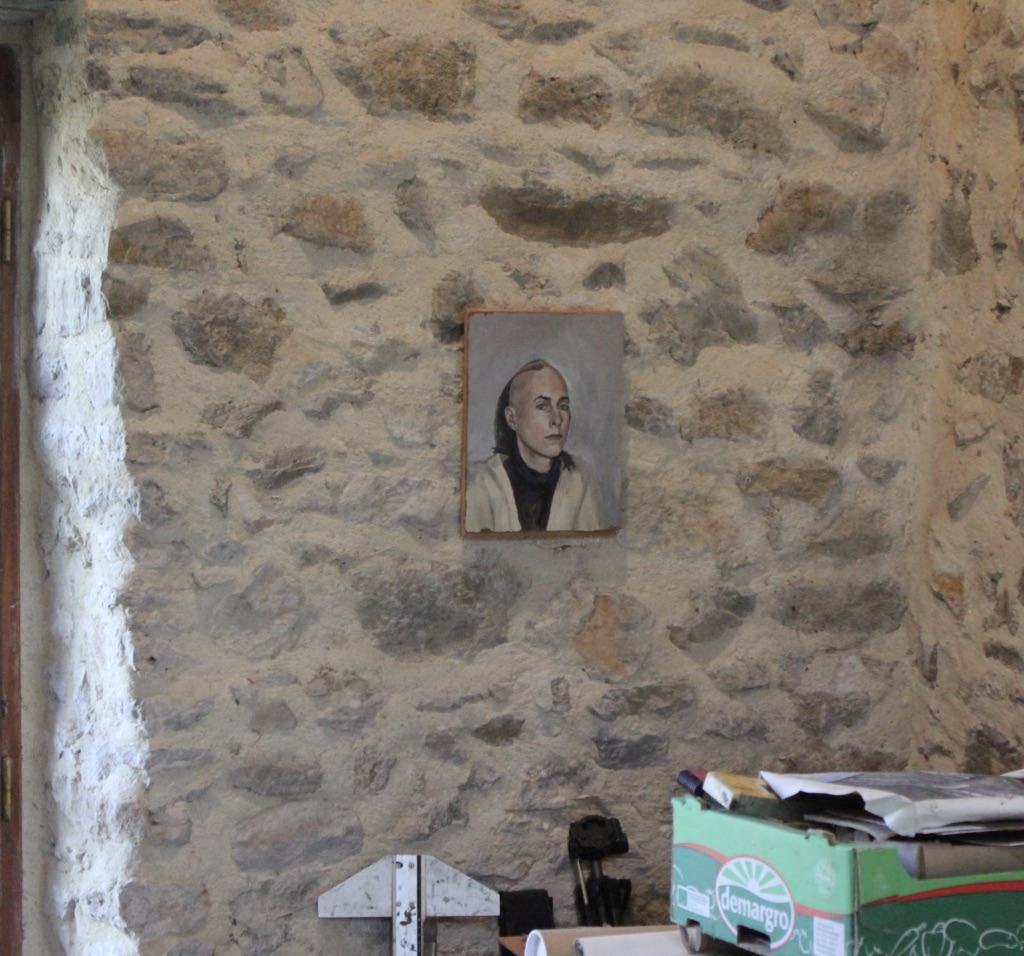
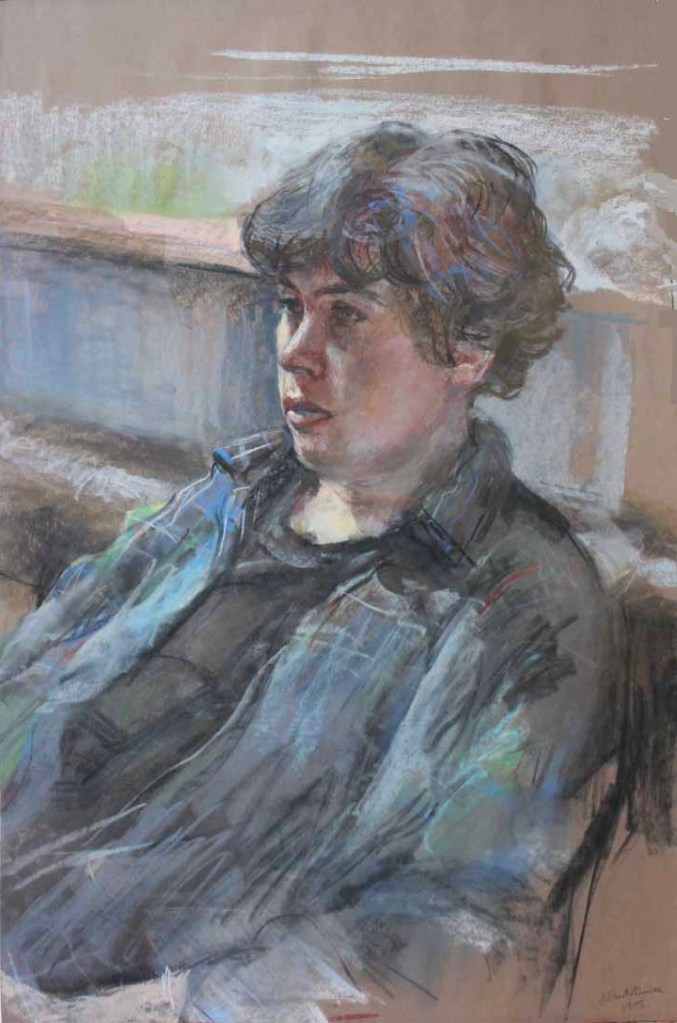
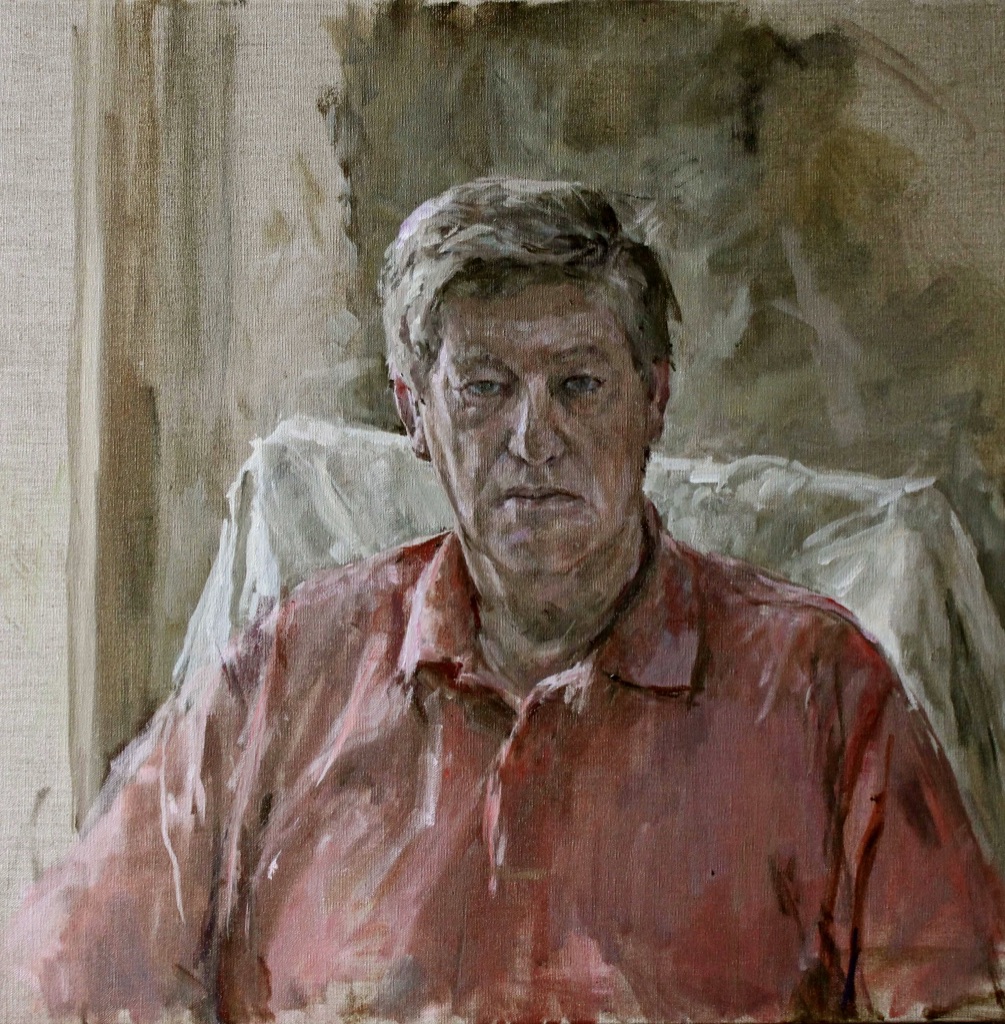
Lectures.
I was unable to stay in France for the whole four weeks of the exhibition, and unable to attend the ‘lectures’ event which probably meant reading, discussing and editing writings for the BK Journal.
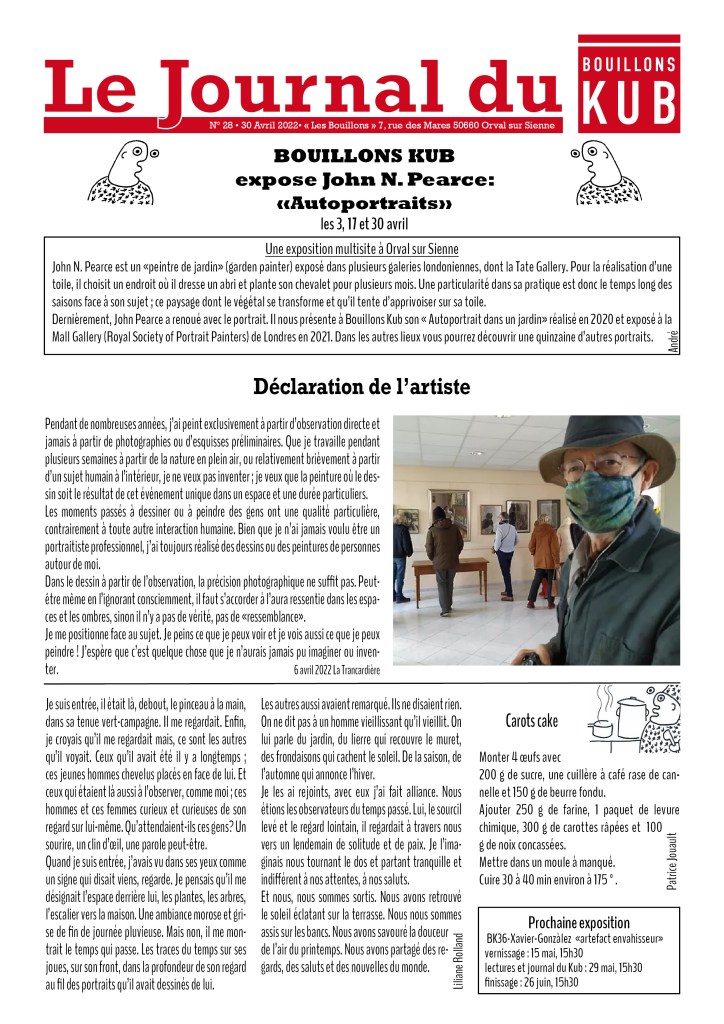
Writings
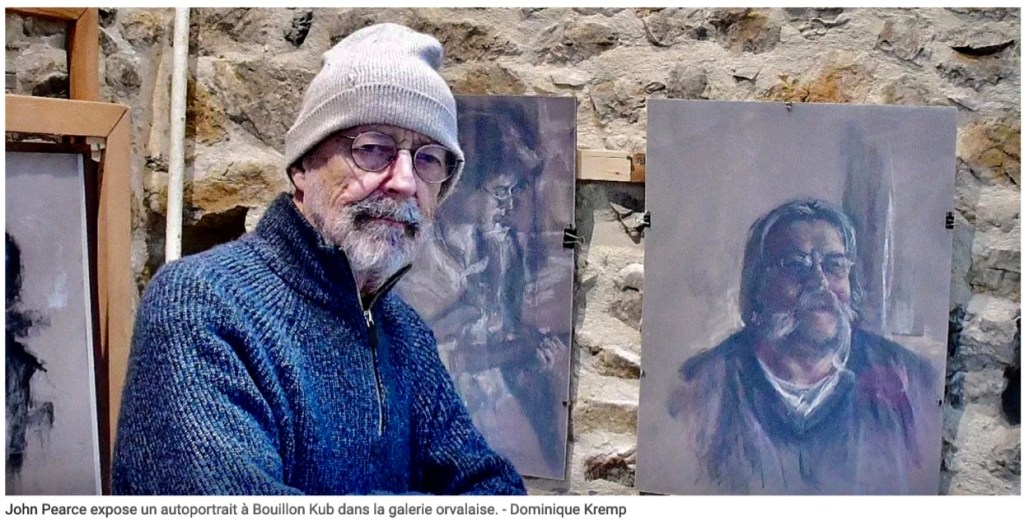
Artist’s Statement
For many years I have painted exclusively from direct observation and never from photographs or prelimnary sketches. Whether I am working for many weeks from nature in the open air, or relatively briefly from a human subject indoors, I don’t want to invent; I want the painting or drawing to be the outcome of that unique event in a particular space and span of time.
Moments spent drawing or painting people have a special quality unlike any other human interaction. Though I have never wanted to be a professional portrait painter, I have always made drawings or paintings of people around me.
In drawing from observation photographic accuracy is not enough. Perhaps even being unaware of it consciously, one has to tune in to the feeling-aura in the spaces and the shadows, otherwise there is no truth, no ‘likeness’.
I position myself in front of the subject. I paint what I can see – and I also see what I can paint! I hope that it is something that I could never have imagined or invented.
John N. Pearce, 6th April 2022 La Trancardière

Standing, Brush in Hand
I walked in, there he was, standing, brush in hand, in his country-green outfit. He was looking at me. Well, I thought he was looking at me, but it was the others he was seeing. Those he had been long ago; those hairy young men placed in front of him. And those who were also there to observe, like me; these men and women curious and curious about his view of himself. What did these people expect? A smile, a wink, a word perhaps.
When I entered, I had seen in his eyes a sign that said come, look. I thought he was pointing out the space behind him, the plants, the trees, the stairs to the house. A gloomy and gray atmosphere at the end of a rainy day. But no, he was showing me the passage of time. The traces of time on his cheeks, on his forehead, in the depth of his gaze over the portraits he had drawn of himself.
The others had noticed too. They said nothing. You don’t tell an ageing man that he is getting old. We talk to him about the garden, the ivy that covers the low wall, the foliage that hides the sun. Of the season, of autumn which heralds winter.
I joined them, with them I made an alliance. We were observers of the past. He, his eyebrows raised and his gaze distant, he looked through us towards a tomorrow of solitude and peace. I imagined him turning his back on us and leaving calm and indifferent to our expectations, to our greetings.
And we went out. We found the bright sun on the terrace. We sat on the benches. We savoured the mild spring air. We shared looks, greetings and news from around the world.
By Liliane Rollande
From Kasimir to John Nelson
Like Kasimir Malevich’s White Square on a White Background (already over a century old), or the monochromes of the same colour as Claude Rutault’s wall, motivated by reflections and approaches that attempt to push back the limits of painting, John Nelson Pearce questions figurative painting. He faces his subject for several months, and tries to restore on his canvas, a synthetic image of the accumulation of moments by following a rigorous protocol.
He defines himself as a “painter of nature”. But, since his youth, John Pearce has always made self-portraits, portraits of his family, friends or commissions; but he does not consider himself a portrait painter.
Immersion
For the record, from the 2000s, introduced to the place by Sylvain Letenneur, John Pearce has set up his easel many times at “Les Bouillons”.
A still vivid memory: my surprise when, being in search of him, and knowing him to be somewhere near the buildings, I discovered him at the edge of the chestnut alley, immersed in the tall grass, under a small shelter, facing a green wall (his subject) armed with his canvas, his palette, his tubes and his brushes.
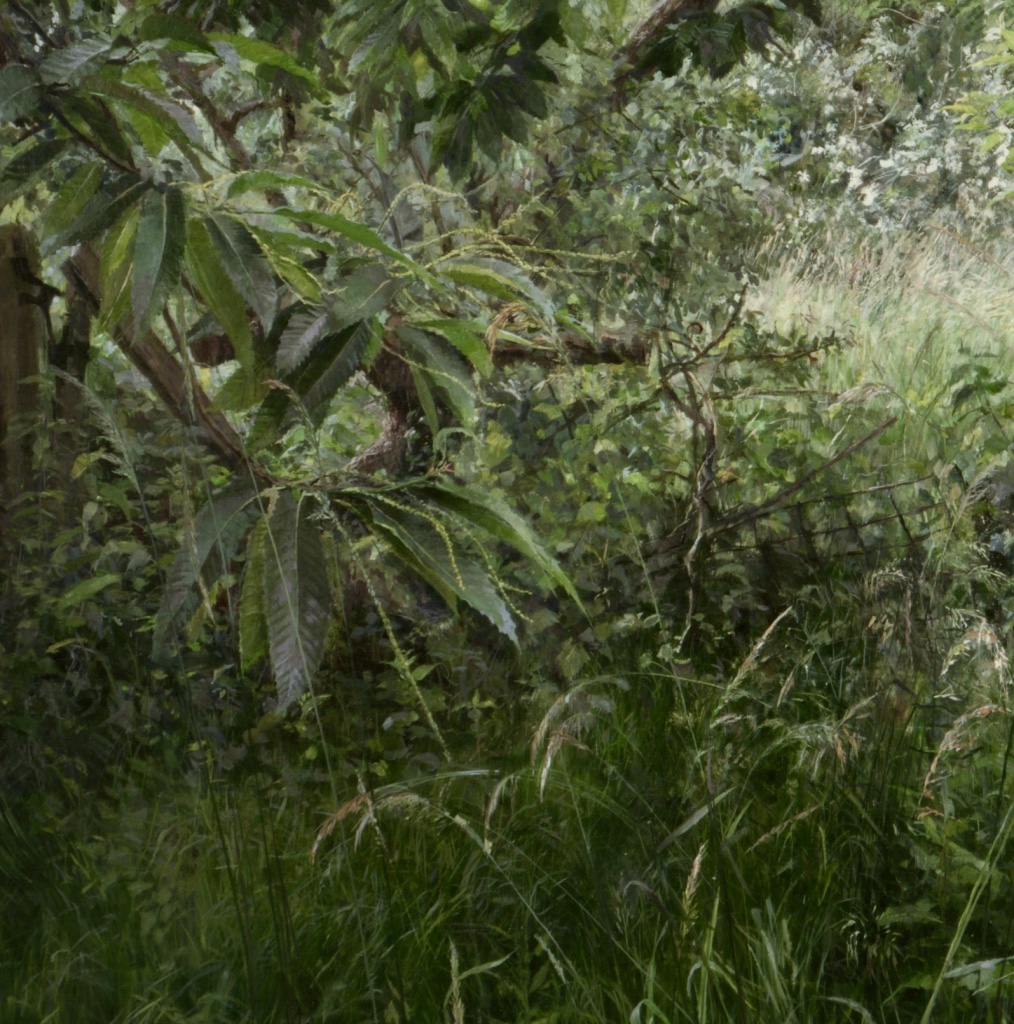
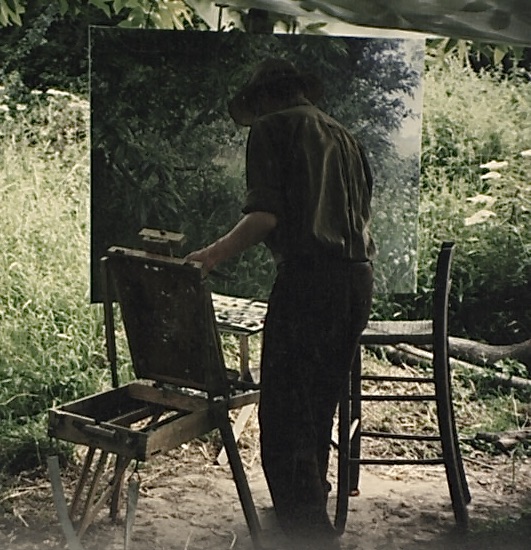
An episode, a performance, a painting
“A TRAVERS CHAMPS” is a meeting over a few summer days, of artists, poets and the public. The proposals are varied: readings, installations, photos, paintings, sculptures, writings, workshops, performances, music, … Giving to see, hear and share are the driving forces behind this gathering.
In 2012, at “Bouillons”, for “A TRAVERS CHAMPS 2″, John Pearce began a performance: “Painting on the spot”. Admittedly, the ‘performance’ is his daily life as an artist, the only difference being that his action here is part of a collective project. Although he had anticipated the event as lasting a few weeks, the artist finished his work only at the end of the year. He even returned at the beginning of the next one to make some modifications, imperatively in situ.
BK35, André
For more about “À Travers Champs 2” click on ACROSS THE FIELD
From a Former Pupil
This is a sketch of me, aged about 8, drawn by my primary school teacher, John N. Pearce. It was done during a quiet class in the afternoon, when everyone must have been working happily and to target, and John consequently had a little free time. He called me up to the front of the class, got me to sit down, and sketched away then and there. If you look carefully, you can even see where my plastic tortoiseshell NHS kiddie specs were mended, at the joint of one arm, by some pink adhesive plaster.

John was (and remains) an exceptional artist as well as a great teacher; and since I ran into him at a school reunion some years ago, he’s also a friend. This lovely little sketch, which I now own, is only the tip of his talent.
I mention this now because he has an exhibition of his work starting today (and scattered over three further days in April) at Bouillons Kub, 7 rue des Mares, 50660 Orval-sur-Seinne, Manche, Normandie, France (https://www.facebook.com/BouillonsKUB). If you happen to be in Normandy at the moment, please do visit (or if you know anyone who’s in the area and who’s into visual art, please let them know).
(Dann Chinn, Posted on Facebook, 3rd April 2022)
“2 avril – Rencontre Avec l’artiste” – A talk in the library
There were ten or eleven people – about the maximum possible in the space – a small table strewn with sketchbooks, odd drawings, and giclée prints of paintings no longer in my possession. I’d given forethought to what I might say; checked useful vocabulary – noting gender, as getting it wrong is a give-away. So much of my time in France was the solitude of a Plein-air painter, my French is not fluent.
I should have begun by thanking André, and thanking the audience for their interest, but, given the signal ‘Prendre la parole‘, I began by blurting that my exhibits had already spoken for me, that art was rather like humour: you don’t explain the joke. I had in mind that exhibitions at Bouillons Kub were typically Dadaist, looking askance at work-intensive art; setting the “dérisoire”, centre-stage; raising an ironic eyebrow.
I referred to the sketchbooks containing unworked scribbles often the work of fleeting moments – my daughter cleaning her teeth or reading in bed, or lying on the grass revising for A-Level; a sculptor friend carving a memorial plaque. But some could be more sustained studies. And, I added, though an artwork was a statement, it should equally be seen as a question, a quest. I had in mind the quotation from Maurice Blanchot: “La réponse est le malheur de la question.”
I explained that for me time was important – that each work was a product of a unique encounter in time and place. I might spend three months painting nature in the open air, but it would be unnatural for a living human to remain immobile for so long.
André drew attention to some youthful works on display, dating from the 1960s, in which the use of colour was noticably more expressionist. I mentioned that, instead of completing paintings from observation on site, I might try working from sketches in future. André pointed out a small painting of Susan Herivel on the beach at Hauteville. It had been done from a drawing made on the spot, and the colour was comparable with those earlier works. (Susan herself had hardly been aware of either the drawing or the painting.)

A young man asked if my models were usually people who interested me and whether we conversed as I worked. They aren’t always people I know, and there will always be some chatting, though too much can be distracting. It’s a different sort of conversation – mostly silent.
As I have said, drawing or painting a portrait is a unique sort of human encounter: “Les moments passés à dessiner ou à peindre des gens ont une qualité particulière qui ne ressemble à aucune autre interaction humaine.“
I didn’t want to be too profound, so I did not say, but I will say now, that we see other people from the outside and ourselves from the inside. That does not mean I know myself better than I know others, but it does mean that my drawing of a person combines fleeting self-recognition with glimpses of worlds I can never know. I have little idea of who or what I really am, either to myself or to others. The two views may not agree. “John Pearce Autoportraits” is both a bit of a joke and rather serious!
In painting or drawing an artist is speaking a non-verbal language and says things that words cannot. This does not mean writers and poets cannot respond to an artwork – on the contrary, the artwork is there for that very reason – to put thoughts and words under new pressures to extend and broaden their categories.
John N.Pearce 17th May 2022
